Sichuan’s regional cities: The road increasingly travelled
20 September 2018
I have been traversing Sichuan province for nearly two years in order to strengthen networks and find business opportunities for Australian companies. I have visited a number of regional (also known as second, third or fourth tier) cities, towns and counties, including Guangyuan, Mianyang, Suining, Guang’an, Luzhou, Leshan, Zigong, Yibin, Xichang, Panzhihua.
A map of Sichuan. Cities focused on in this post (Guangyuan, Mianyang, Suining, Guang'an) are highlighted in yellow.
Australians are unlikely to hear about these places. Yet, each is steeped in its own rich history and culture, with a population of at least two million. Each is unique and offer opportunities for trade and investment. Leaders and officials of these places are unanimous in their eagerness to build links with Australia and cooperate economically.
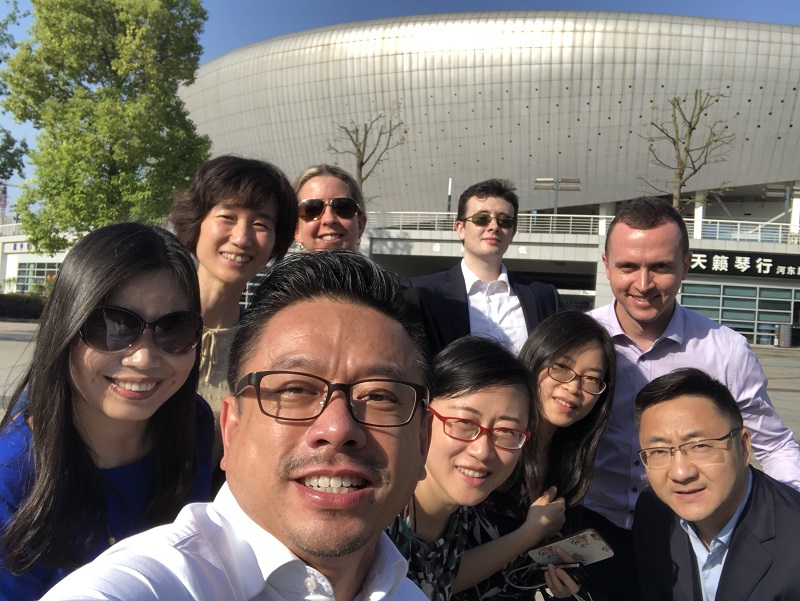
Team Australia in Suining
In the past many of these secondary cities were cut off from the provincial capital Chengdu and the major river port of Chongqing, because of rough terrain and long distances. In fact, a Tang Dynasty poet Li Bai (李白701-762) once said that the state of Shu (ancient name for Sichuan) was harder to reach than heaven itself (蜀道难,难于上青天 Shudaonan, nanyu shangqingtian). But now, with rapid improvements in infrastructure, these places are more connected than ever before. In fact, many places have become transit points for China’s ambitious Belt and Road Initiative.
I’ve categorized these cities into three parts: the northeastern Sichuan cities of Guang’yuan, Mianyang, Suining and Guang’an; the southeastern cities of Leshan, Luzhou and Zigong; and the southern cities of Xichang and Panzhihua. There are many more cities and towns where I will eventually make my way.
Northeast: Guangyuan, Mianyang, Suining and Guang’an
Guangyuan (population 3 million) in the province’s northeast was strategically important in ancient times. It is located on the only pass in the mountain range that separates Sichuan from the rest of China. The historic Jianmen Pass is where many battles were fought, especially during the Three Kingdoms period. Another historical claim to fame is its status as the birthplace of China’s only Empress, Wu Zetian, during the brief Zhou Dynasty.
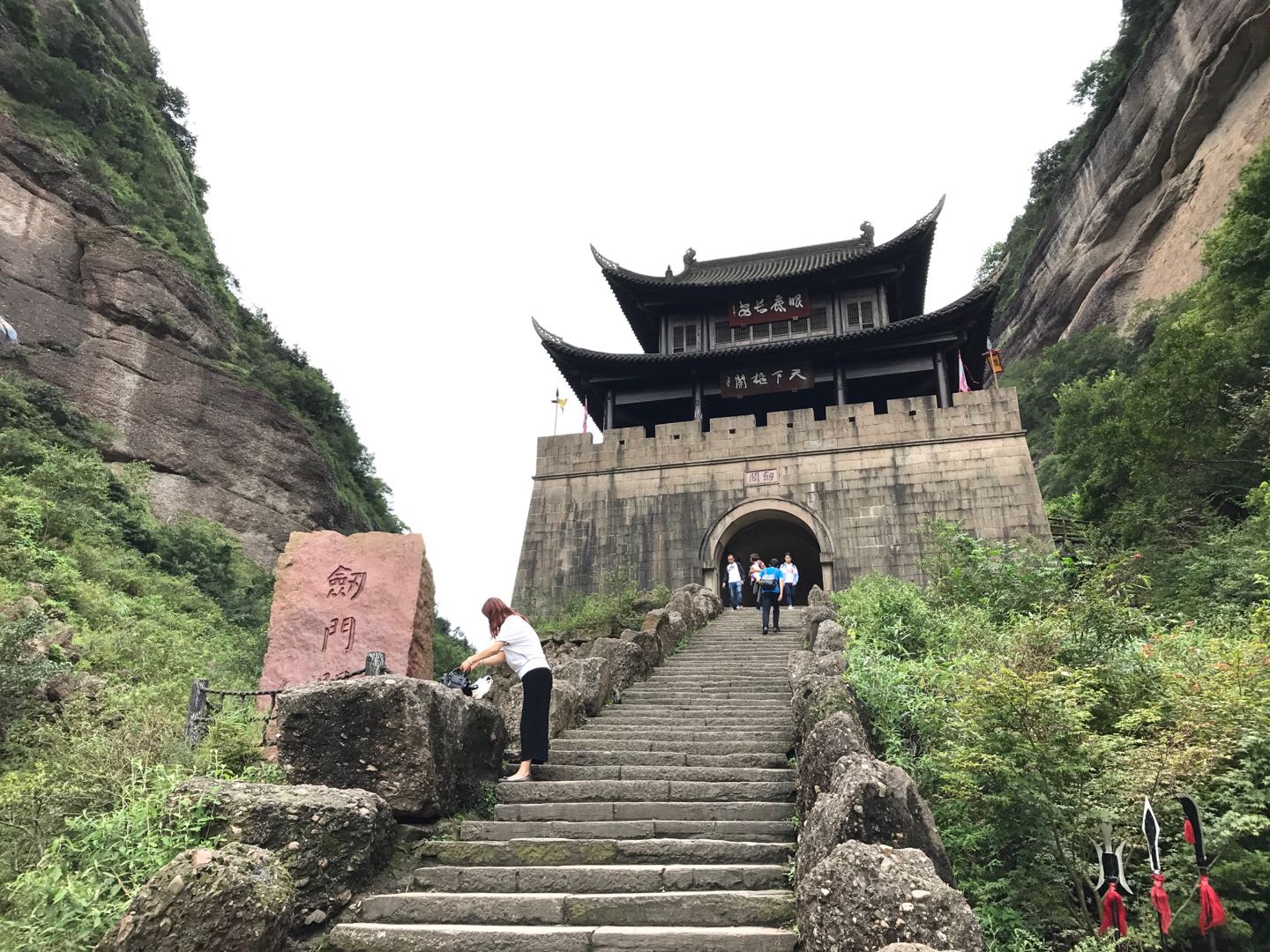
Jianmen Pass in Guangyuan
Today, Guangyuan is a city linked by fast train midway between Chengdu and Xian. From Chengdu, a fast train ride takes less than two hour. Guangyuan’s economy is transitioning from heavy manufacturing and mining to environment-friendly development. As Guangyuan has beautiful forested mountains and clear rivers, the city has decided to focus on eco- and wellness tourism. Industries such as food and beverage and biomedicine are supported so as to have less impact on the environment. Organic food production has become the priority in agricultural development. Interestingly, Guangyuan is widely acknowledged as the place where Chinese gooseberries (or kiwifruit) originated.
Opportunities that could be of interest for Australians are in the areas of education, especially tourism and hospitality, organic agribusiness as well as a market for Australia’s health products and services. Guangyuan is open to establishing friendship links with Australian cities or towns.
Mianyang (population 6 million) is Sichuan’s second largest city. Located between Guangyuan and Chengdu, Mianyang has traditionally been important for the defence of Chengdu. Two hours’ drive (or 40 minutes by fast train) from Chengdu, Mianyang is a major centre for China’s electronics and military industries, being the home for the national-level China Academy of Engineering Physics and the China Aerodynamics Research and Development Centre. The former is the primary design laboratory for China’s nuclear weapons since the 1960s.

A model of China's first hydrogen bomb on display at Mianyang's Science and Technology Exhibition Hall
Mianyang has been designated China’s first and only national-level science and technology city. It has a high-tech zone, the economic and technological development zone and the science and technology business park, offering incentives for high-tech startups.
The Mianyang International Technology Business Incubator, established in 2015, provides a platform for introducing high-level professionals and high-tech projects from overseas. It offers a range of services including business match-up, technological transfer, exhibitions and investment and trade facilitation. The incubator offers a range of incentives – both financial and policy support – to attract innovative individuals and teams to start businesses. In addition, there are also preferential policies for land use, international exchanges, development planning and personnel training.
I visited Mianyang twice this year, once with our Science, Industry and Innovation Counsellor Joanna Bunting, and another occasion to attend the annual Mianyang Science and Technology Expo.

One of Mianyang's many hi-tech and innovation incubators
Mianyang and the City of Casey in Melbourne signed an MOU to establish friendship links.
Opportunities for Australian business are in innovation and startups, high technology research and development, as well as vocational education.
Suining (population 4 million) is located midway between the mega cities of Chengdu and Chongqing, and therefore enjoyed strong economic development for the past few decades. Suining’s long history can be seen through its temples from the Sui and Tang Dynasties and the remarkable Celadon Museum. Locals believe that their city is the birthplace of Kuanyin, the Goddess of Mercy. Suining is two hours’ drive from Chengdu or Chongqing.
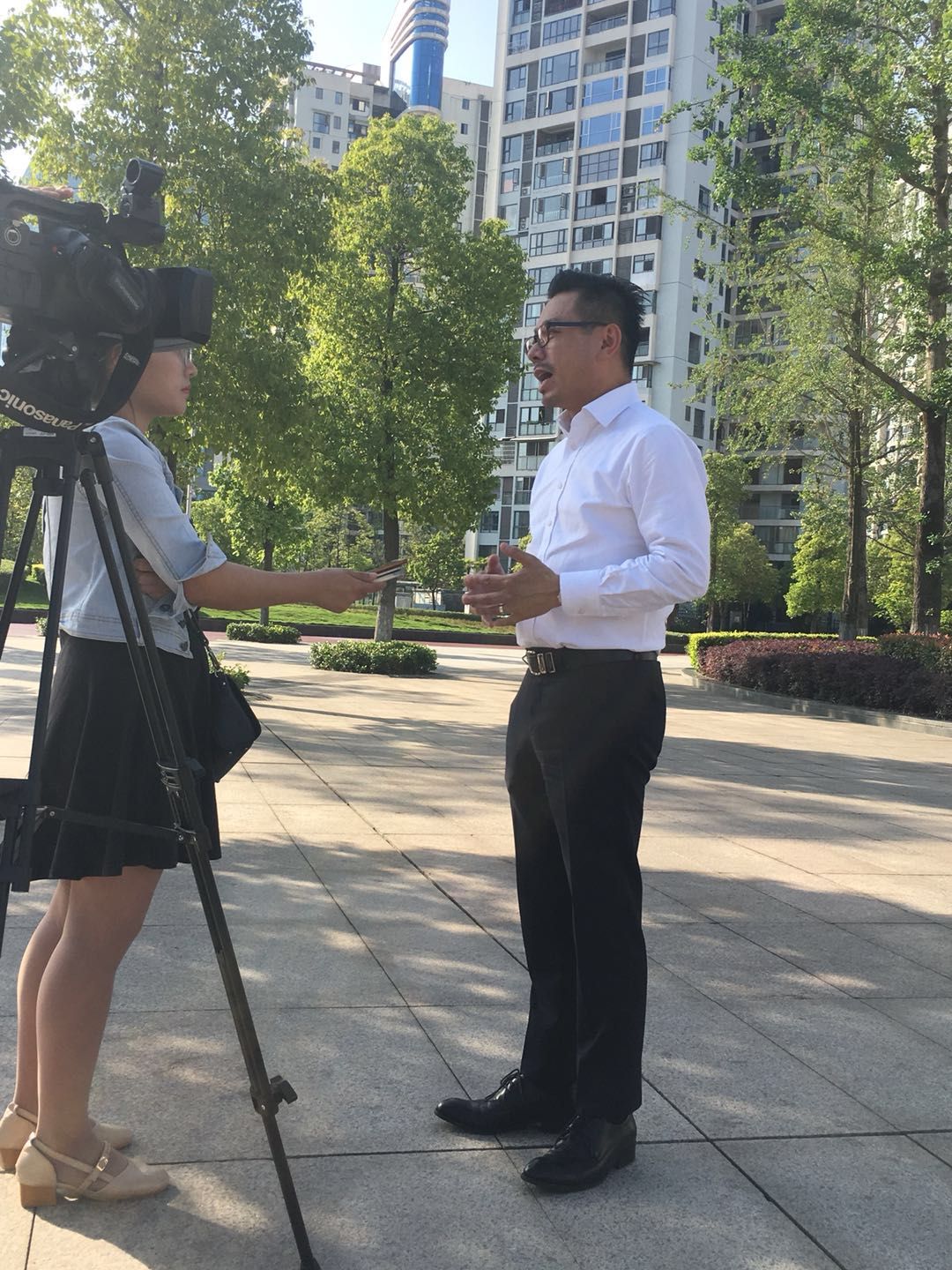
Speaking to local media about Australia's strengths in liveability and urban development
In April this year, I led a Team Australia delegation to Suining to learn more about China’s “sponge city” strategy, as the city is one of 16 pilot “sponge cities” designated by the central government. The delegation comprised representatives from Austrade, the Victorian and Queensland Governments, and the Australian Chamber of Commerce West China, all of whom are based in Chengdu. The sponge city concept is also known as low impact development or water sensitive development. As I understand, a sponge city incorporates urban water management into urban planning and design.
Heavy rains can stress the storm water system, leading to floods and possibly contaminating the city’s water supply. Through clever design and use of permeable asphalt and pavers, storm water can be channeled for various uses.
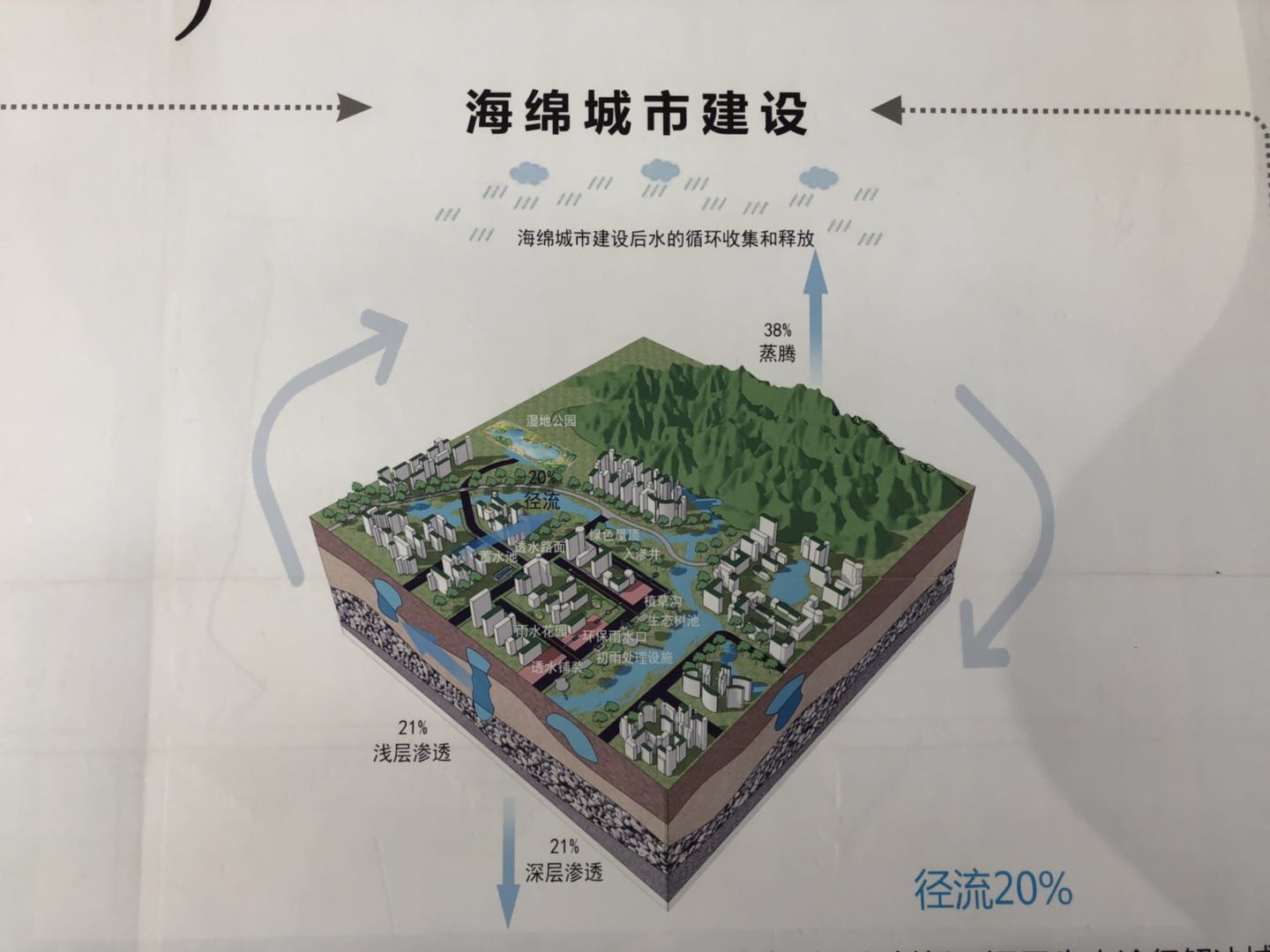
A visual graphic of Suining's Sponge City Plan
We also visited Sichuan Tianqi Lithium’s first lithium processing plant in Suining. The company has invested around $1 billion in Western Australia’s mining industry, including to build a lithium processing plant. Furthermore, Tianqi Lithium has invested in a $5 million partnership with Western Australia Museum. This funding will see the museum hosting high calibre exhibitions of Chinese culture over a 10-year period from 2020.
I was pleasantly surprised to find an Australia Park in Suining. It is modest in size but has distinctive Australian features such as gum trees, a water tank (echoing a theme from the outback), kangaroo and sheep statues. I was touched that Suining has made an effort to raise awareness of Australia among its citizens.
A kangaroo-shape decoration at Suining's Australia Park
Opportunities for Australian business in Suining are in environment-sensitive projects, consistent with Suining’s sponge city efforts; the education sector, as Suining is keen to attract more talent; and in the food and beverage sector, as the city seeks greater variety in consumption items.
Guang’an (population 3 million) is further east of Suining, closer to Chongqing than Chengdu. Set among mountains and rivers, Guang’an is accessible by fast train (a two hour trip) or road from Chongqing (also two hours). Its claim to fame is that it is the birthplace of Deng Xiaoping. He is Sichuan’s favorite son, revered as the architect of China’s reform and opening. Deng’s house where he was born has become a museum dedicated to his contribution to China’s political and economic life. You can even visit the tree Deng climbed as a child.
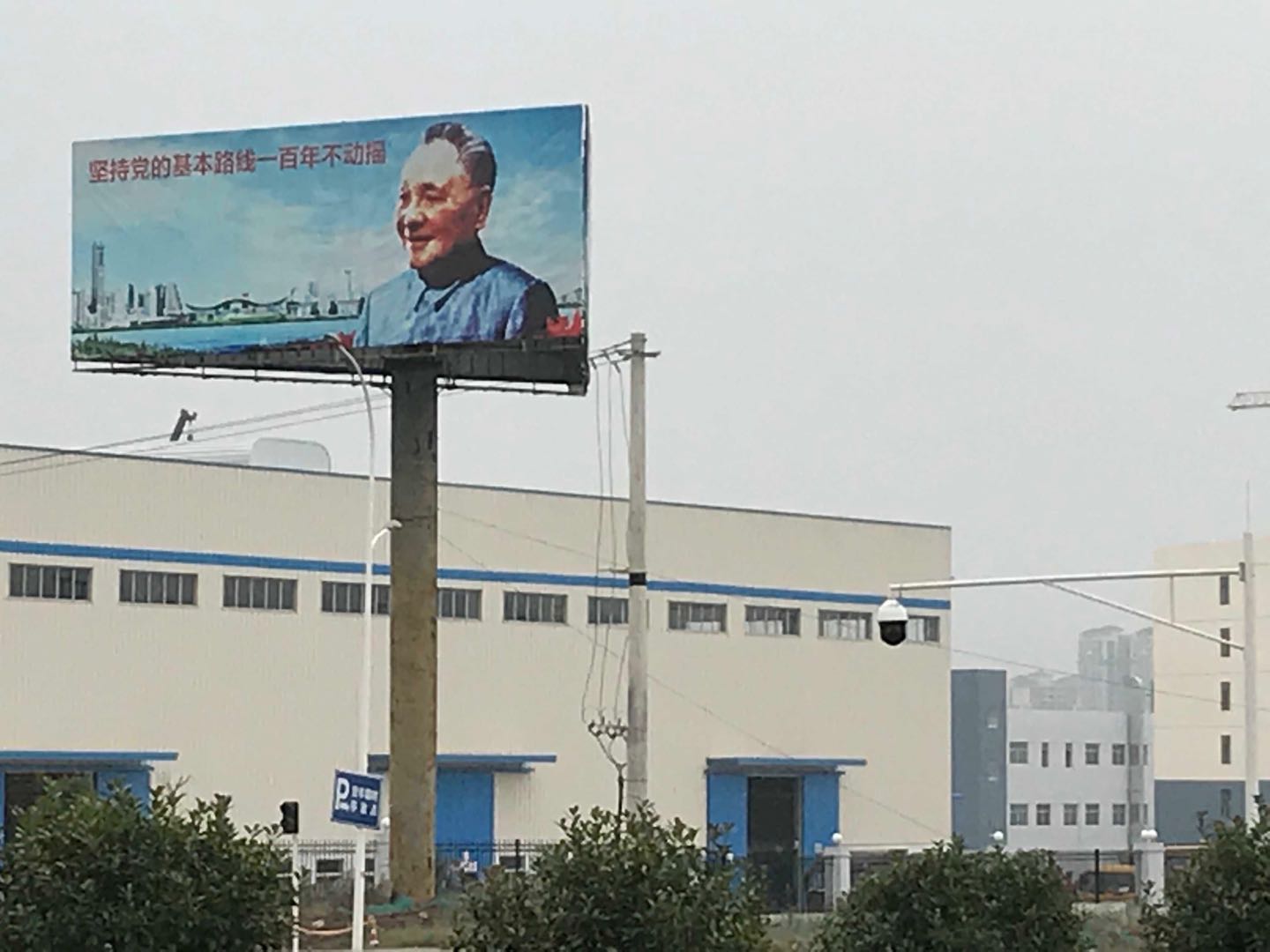
A billboard of Deng Xiaoping at one of Guang'an's industrial parks
Coal mining, electricity generation, building materials, machinery manufacturing and food processing are the major industries. There are a number of industrial parks in Guang’an, taking advantage of their proximity to Chongqing and nearby river ports.
I visited the Guang’an (Shenzhen) Industrial Park where I heard that its key advantage for companies operating there is to access preferential policies and incentives offered by the city of Shenzhen in Guangzhou. The link between Guang’an and Shenzhen is a touching one – these two cities are connected by Deng Xiaoping. Guang’an was where he was born and Shenzhen was created by Deng as a spearhead of reform and opening. And now that Shenzhen has become one of the wealthiest cities in China, it was time to give back to Deng’s hometown.
Opportunities here are in the area of vocational and technical education, tourism services, and food and beverage.
My next blog will be about Sichuan’s Southeast: Leshan, Luzhou, Zigong and Yibin
Click here to return to Australian Consul-General's Blog on Southwest China
